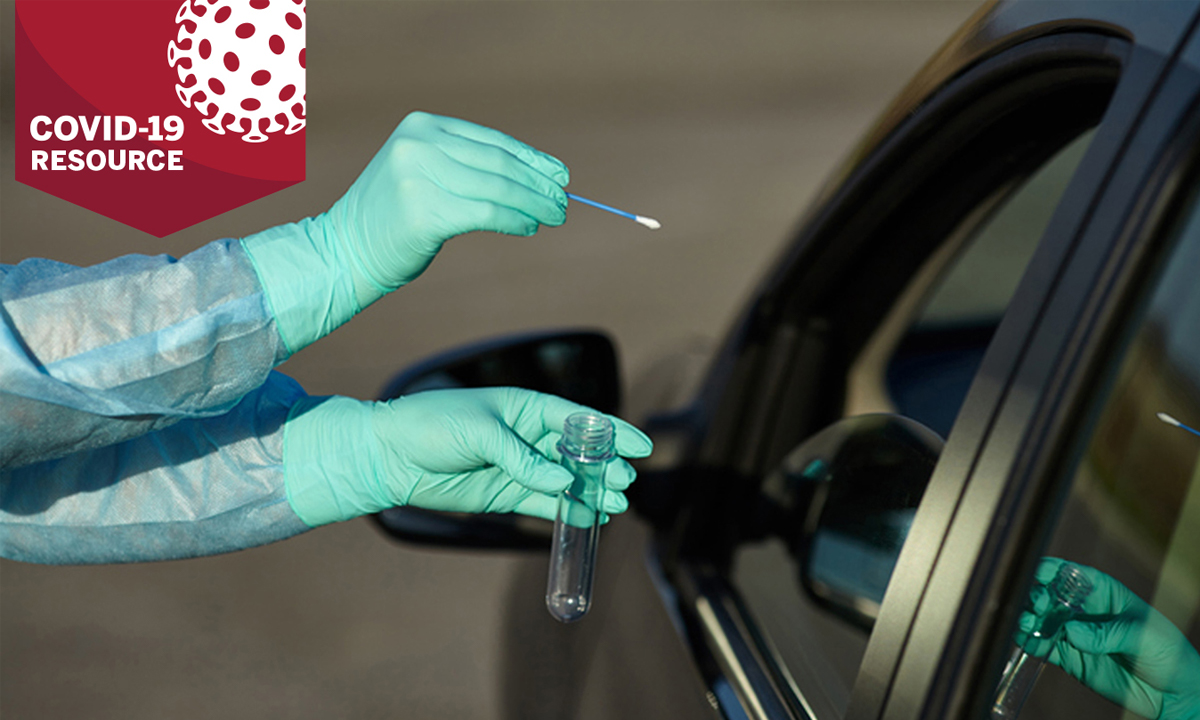
Information regarding COVID-19 has rapidly evolved. The content in this article provides a historical snapshot of events surrounding the date of posting.
In the midst of the COVID-19 pandemic, health care systems have been forced to quickly find new ways of delivering care. Some of the most successful efforts are led by physicians, nurses and administrators who have a strong understanding of safety and quality improvement principles. They know how to apply these concepts in the most effective way to respond to current stressors—not only locally but also on the national and international levels.
The rapid and extensive spread of the SARS-CoV-2 virus is an unprecedented situation, greatly straining health care organizations throughout the United States and the world. However, amid all of the challenges faced by those on the front lines are significant opportunities to drive lasting organizational change.
“As health care professionals and change advocates, we have a responsibility to lead and establish care delivery models that adapt to current and unforeseen complexities. Those who are best positioned to accomplish these goals have a deep understanding of safety, value, systems and informatics and how to apply these elements in a meaningful way,” says Katherine Santos, MBA, who serves as Vice President of Strategy and Operational Excellence for Legacy Lifecare in Massachusetts. Santos is also a Co-Director of Harvard Medical School's postgraduate certificate program Safety, Quality, Informatics & Leadership.
She points out that some of the lessons leaders have learned over the past months can help guide you—and your organization—towards success in the years to come.
4 Lessons to Help Clinicians Lead Their Organizations to Success:
Lesson 1 — Establish a formal, continuous improvement process to drive change.
“In the middle of a pandemic, a lot is unknown. Therefore, it is more important than ever to have people who understand the concept of learning health systems so they can quickly identify problems, test improvements and lead their organizations to success,” says Santos.
She explains that the learning health system is a continuous improvement process framework first introduced by the Institute of Medicine more than a decade ago. It pulls together best practices in informatics, science and culture in order to drive innovation within the organization and achieve high-quality, safe and efficient care for patients and employees. The framework consists of three main actions that form a continuous cycle: transforming data to knowledge, translating knowledge to performance and evaluating performance with data. Leaders must be well-versed in this framework, as well as in other common improvement methodologies, in order to be successful in the increasingly complex state of health care today.
Lesson 2 — Concentrate on the immediate and highest priority concerns and use data and informatics to inform decisions.
“During a crisis, high-impact leaders are adept at listening to the front line to identify issues that are most important and urgent to tackle, and then using data and informatics to evaluate impact of changes,” Santos says.
For instance, researchers from Mass General Brigham recently put such a model into action successfully. Early in the pandemic, there was great concern about how to protect health care workers from getting infected by COVID-19 and debate on whether the use of masks were really effective in preventing the spread. Mass General Brigham decided to implement a universal masking policy that required all staff in the health care system to wear a surgical mask while in the hospital. “At a time when most health systems were facing severe personal protective equipment (PPE) shortages, this new and unproven policy was seen as a bold and risky move,” Santos notes. However, a study has now shown that the rate of COVID-19 infection among their health care workers dropped significantly after universal masking was adopted, even as cases in Massachusetts rose. This has reinforced how crucial the broad and consistent use of PPE is in fighting this disease. “Their study helped inform a much larger push for the practice of wearing masks in other places nationwide, not just in health care settings,” she adds.
Santos offers another example in her own organization. “At our nursing homes at Legacy Lifecare, we entered the fog of the pandemic at the same time as the hospitals in Boston, perhaps even earlier.” The lack of widespread testing during the early stages of the pandemic allowed COVID-19 to silently take hold in several communities surrounding Boston. “Here again, having the right leadership that listened to the concerns of the front line allowed us to make early, decisive actions to help provide the best care for our patients and save lives,” Santos says. While most facilities were waiting for the state to ramp up testing capacity, leaders at Legacy Lifecare contracted with a private laboratory to get all patients tested, regardless of symptoms. “By testing early, our organization faced difficult decisions with the right information to best keep our patients and staff safe. Now, our early steps have put our leadership team in a position to advise the state, senior care industry and other health care facilities facing similar challenges,” Santos says.
Lesson 3 — Translate the research into meaningful action and disseminate findings rapidly across organizations—and across countries.
“A crucial feature of a successful learning health system is its use in translating findings from across all segments of health care and broadcasting these lessons to others at scale,” Santos says. To illustrate this concept in action, she shares another example of a learning health system in action from hard-hit Italy, whose number of COVID-19 cases overwhelmed its hospital systems at the pandemic’s peak. “Clinicians in Italy discovered that moving COVID-19 patients experiencing respiratory distress into the prone position, or lying on their stomachs, improved their lung function and led to better outcomes. This approach was rapidly shared and adopted by all hospitals,” she says. “We now know that it is crucial to create proning teams to put patients in the best position for full recovery.”
Santos also points to the rapid adoption of drive-through testing across the globe as another example of the successful spread of ideas during a crisis. Drive-through testing has been central to South Korea’s emergence as the world’s biggest success story in the face of the pandemic. “Drive-through testing helped South Korea test its population faster than any other nation and is a major factor for why the country’s incidence rate is so low. Now, this same model is being used in resource-rich countries like the United States and Germany and developing nations like India and Nigeria,” she says.
In both examples, health care leaders knew how to develop innovative practices and disseminate them broadly via established and informal networks. “The ability and freedom to innovate, teach and learn are critical to accelerating positive change,” she adds.
Lesson 4 — Remember to always keep the patient and family at the center of your efforts, which means involving them in the improvement process.
“Regardless of the conditions and challenges we face, it is important that we always go back to thinking about how our work affects the patient,” Santos says. “We not only need to be safe, but we also need to value the benefits of patient-centered care.”
She shares that while the clinical and administrative responses to the crisis were being enacted, leaders at Legacy Lifecare reminded themselves of the whole patient. In parallel, non-clinical care team members and family advocates were consulted to discuss what was missing. “Fear and loneliness can hamper and even reverse the best clinical care in our nursing home patients,” Santos stresses. “To find answers, we looked outside our industry to see the steps others were taking to keep people connected.” Using technology to enable virtual connection was a key factor being adopted in the education and business sectors. “We saw we could use the same tools – tablets, video calling and online scheduling to mitigate the absence of families who were necessarily banned from being on-site,” she points out.
Even though the technology was relatively simple, the culture change was significant. Care teams committed to reserving blocks of time to facilitate video and phone calls. Online self-scheduling made it easy for families to select a time to connect with loved ones without adding administrative burden to the staff. “This process has been so well-received by families and staff that even now, we have expanded its use to scheduling in-person supervised visits and care plan meetings to keep families informed,” Santos says. “Every week, we are constantly adapting our processes to the needs of each facility, care team and family.”
“While we have overcome many challenges during this crisis, the joy of a patient and whole family spread across the country or the world reuniting over video while we were on lockdown is one of our major successes,” she says. “We did not hesitate to share this new model with other long-term care centers, and this practice will remain in place even when this crisis has passed.”
Committing to Continuous Learning
With no end in sight to the current COVID-19 outbreak, Santos stresses that health care workers who desire to hold a leadership role must know how to position themselves for success on a global scale. “With the widespread nature of the pandemic, the most effective leaders have strong networks they can use to share their learnings and learn from the experiences of others,” she says.
She also adds that today’s leaders must commit to continuous learning by building on their array of skills so they are prepared to face whatever new challenges may come their way.
Written by Lisa D. Ellis


